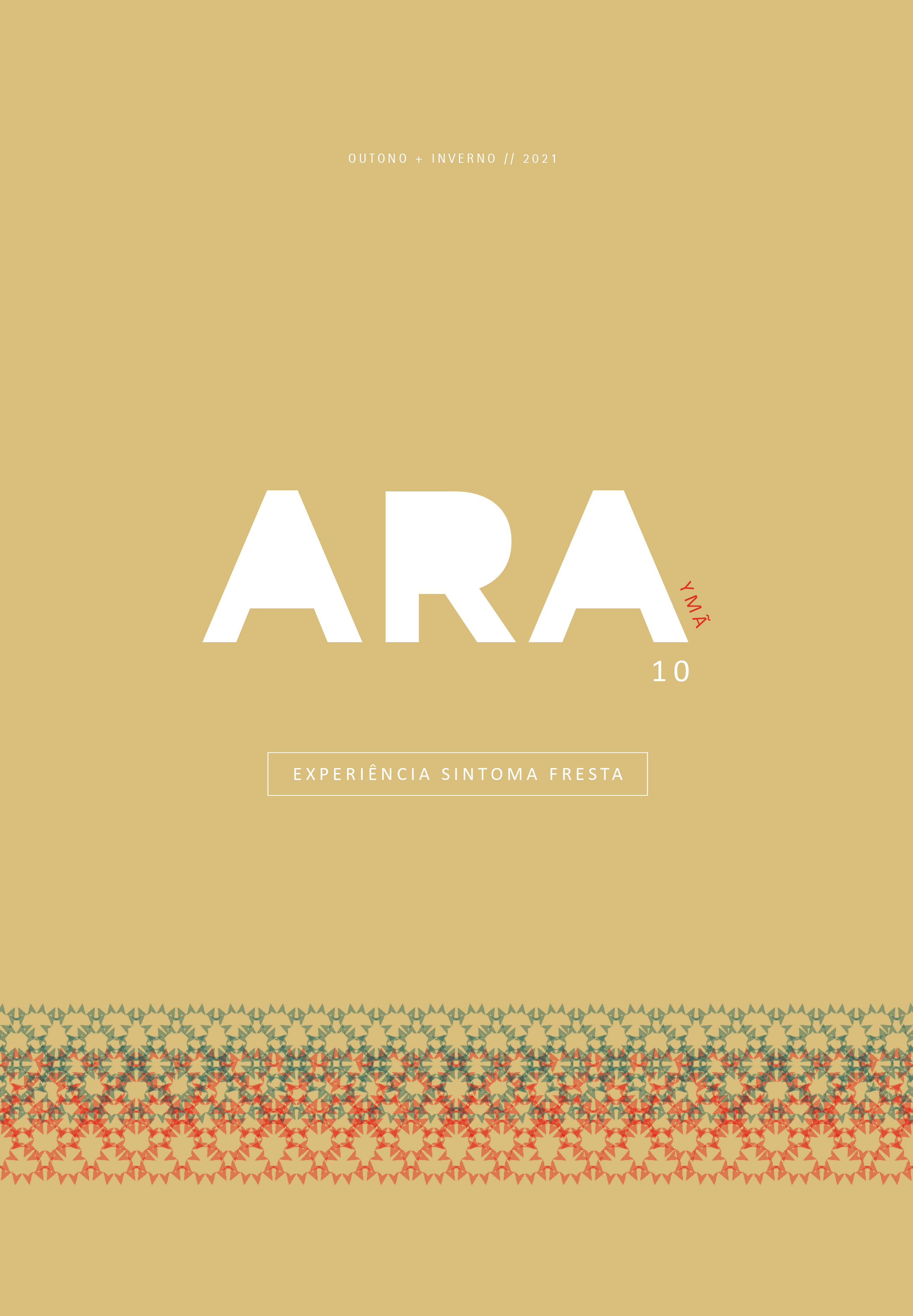The spectator’s helplessness in Peter Eisenman’s 1960s Peter projects
DOI:
https://doi.org/10.11606/issn.2525-8354.v10i10p277-298Keywords:
Eisenman, Peter D., 1932, Post Modern Architecture, Formalism (art), Architecture theory, BiopoliticsAbstract
Reading of the beginning of Peter Eisenman's career, between 1967 and 1978, identifying criticisms developed by Michael Hays and Hal Foster that point him as an image producer. Approaching in this process the operation that Eisenman makes from modern abstraction and its influence between the producer and the viewer. Condition read from the helplessness as discussed by Vladimir Safatle.
Downloads
References
ARGAN, Giulio C. História da Arte como História da Cidade. São Paulo, Martins Fontes, 2014.
ARANTES, Otilia B. F. O lugar da arquitetura depois dos modernos. São Paulo, Edusp, 1993.
BURGER, Peter. Teoria da Vanguarda. São Paulo. Cosac Naify, 2008.
DERRIDA, Jacques. A Certain Impossible Possibility of Saying the Event in Critical Inquiry, The Univertsity of Chicago Press, Vol. 33, No. 2, 2007. P.441-461.
DERRIDA, Jacques. Khôra. Papirus, 1995.
DERRIDA, Jacques. Point de Folie - Maintenant l'architecture in HAYES, Michael. Architecture Theory Since 1969. The MIT Press, 1998. P.570-581.
DERRIDA, Jacques; HANEL, Hilary P. A Letter to Peter Eisenman. Assemblage, [s.l.], n. 12, p.6-13, ago. 1990.
DAVIDSON, Cynthia. The Absence of the Presence; or, The Void. In: DAVIDSON, Cynthia (org.) Tracing Eisenman. Nova York: Rizolli International Publications, Inc., 2006b, p. 25-31.
EISENMAN, Peter. Aspects of Modernism: Maison Dom-ino and the Self-Referential Sign. Log, Nova York, n. 30, 2014, p.139-151.
EISENMAN, Peter. Cardboard Architecture, in Casabella, 374, 1973. P.17-31.
EISENMAN, Peter. Dall’Oggetto alla Relazionalità: la Casa del Fascio di Terragni. Casabella, [S.l.], n. 344, p.38-41, 1970.
EISENMAN, Peter. Diagram: An Original Scene Of Writing. Any: Architecture New York, Nova York, p.27-29, 1998.
EISENMAN, Peter. Diagram Diaries. [S.l.]: Universe Publishing, 1999.
EISENMAN, Peter. From Object to Relationship II: Casa Giuliani Frigerio: Giuseppe Terragni Casa del Fascio. Perspecta, New Haven, vol. 13/14, p.36-65, 1971.
EISENMAN, Peter. House VI. Progressive Architecture, [s.l.], v. 58, n. 6, jun. 1977. p.57-67.
EISENMAN, Peter. House X. [s.l.]: Rizzoli, 1982.
EISENMAN, Peter. The End of the Classical:The End of the Beginning, the End of the End, in NESBITT, Kater (org.). Theorizing a New Agenda for Architecture. Nova York, Princeton Architectural Press. 1996b. P.211-227.
EISENMAN, Peter. The Formal Basis of Modern Architecture. Zurich: Lars Muller Publishers, 2006.
EISENMAN, Peter. Notes on Conceptual Architecture, in Eisenman Inside Out. Yale University Press, 2004. p.10-27.
EISENMAN, Peter. Post-Functionalism, in NESBITT, Kater (org.). Theorizing a New Agenda for Architecture. Nova York, Princeton Architectural Press. 1996a. P.78-83.
EISENMAN, Peter. Post/El Cards: A Reply to Jacques Derrida. Assemblage, [s.l.], n. 12, p.14-17, ago. 1990.
EISENMAN, Peter. Towards an Understanding of Form in Architecture. Architectural Design, [s.l.], out. 1963. p.458-459.
EISENMAN, Peter et al. Five Architects: Eisenman, Graves, Gwathmey, Hejduk, Meier. [S.l.]: Oxford University Press, 1975.
EVANS, Robin. Not to be used for wrapping purposes. Peter Eisenman: Fin d’Ou T Hou S. in AA Files, Londres, n. 10, p. 68-78, 1985.
FOSTER, Hal. O Retorno do Real. São Paulo. Ubu Editora, 2017.
FOSTER, Hal. O Complexo Arte-Arquitetura. Ubu Editora, 2017.
IZAR, Gabriela. Diagramática: descrição e criação das formas na arquitetura seriada de Peter Eisenman. Tese (Doutorado) - Curso de Arquitetura e Urbanismo, Universidade de São Paulo, São Paulo, 2015.
KIPNIS, Jeffrey. Twisting the Separatrix. In: HAYS, Michael (org.). Architecture Theory Since 1968. Cambridge, Estados Unidos: MIT Press, 1998, p. 710-742.
PORTO FILHO, Gentil. O fim do objeto: linguagem e experimentação na arquitetura depois do modernismo. 2004. Tese (Doutorado) - Curso de Arquitetura e Urbanismo, Universidade de São Paulo, São Paulo, 2004.
HAYS, Michael. Architecture’s Desire. Cambridge, MIT Press, 2010.
JAMESON, Fredric. Periodizando os anos 60. In: HOLLANDA, Heloisa Buarque de (Org.). Pós-Modernismo e Política. Rio de Janeiro: Rocco, 1992. P.81-126.
JAMESON, Fredric. Pós-Modernismo: a Lógica Cultural do Capitalismo Tardio. Ática. 1996.
JENCKS, Charles. Arquitetura Internacional: Ultimas tendências. Gustavo Gili Editorial S.A., 1989.
JOHNSON, Philip; WIGLEY, Mark. Deconstructivist architecture: Catálogo de exposição. [s.l.]: MoMA, 1988.
MONEO, Rafael. Inquietação Teórica e Estratégia Projetual. São Paulo: Cosac Naify, 2008.
MONTANER, Josep Maria. Depois do Movimento Moderno: Arquitetura da Segunda Metade do Século XX. Gustavo Gili, 2001.
SAFATLE, Vladimir. O Circuito dos Afetos: Corpos Políticos, Desamparo e o Fim do Indivíduo. Belo Horizonte, Autêntica Editora, 2016.
SPERLING, David Moreno. Espaço e evento: Considerações Críticas sobre a Arquitetura Contemporânea. 2008. Tese (Doutorado) - Curso de Arquitetura e Urbanismo, Universidade de São Paulo, São Paulo, 2008.
TELLES, Sophia. Urgência Distraída. In MASP. Malhas, Escalas, Rastros e Dobras na Obra de Peter Eisenman: Catálogo de exposição, São Paulo: MASP, 1993, p. 9-14.
TSCHUMI, Bernard. Architecture and Disjunction, The MIT Press, 1996.
VIDLER, Anthony. Histories of the Immediate Present: Inventing Architectural Modernism. 2008.
Downloads
Published
Issue
Section
License
Copyright (c) 2021 Bruno Juliani Mentone

This work is licensed under a Creative Commons Attribution 4.0 International License.
Autores que publicam nesta revista concordam com os seguintes termos:
- Os autores mantêm os direitos autorais e concedem à revista o direito de primeira publicação, com o trabalho simultaneamente licenciado sob a Licença CreativeCommonsAttribution CC-BY que permite o compartilhamento do trabalho com reconhecimento da autoria e publicação inicial nesta revista.
- Os autores têm autorização para assumir contratos adicionais separadamente, para distribuição não exclusiva da versão do trabalho publicada nesta revista (ex.: publicar em repositório institucional ou como capítulo de livro), com reconhecimento de autoria e publicação inicial nesta revista.
- Os autores têm permissão e são estimulados a publicar e distribuir seu trabalho on-line (ex.: em repositórios institucionais ou na sua página pessoal) a qualquer ponto antes ou durante o processo editorial, já que isso pode gerar alterações produtivas, bem como aumentar o impacto e a citação do trabalho publicado (Veja O Efeito do Acesso Livre).


